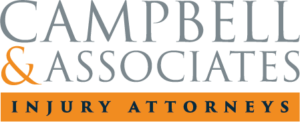Why Do Car Accidents Happen More Frequently in the Summer?

While the winter season is often associated with risky driving conditions, summer presents it own risks. From road construction to out-of-town recreational drivers pulling boats and campers, summertime hazards require drivers to stay alert and share the road.
According to the Insurance Institute for Highway Safety (IIHS), the most dangerous times of year on U.S. roads are during the summer and early fall. In fact, August and September are considered peak months for car accidents, based on a report by the National Highway Traffic Safety Administration (NHTSA).
If you or someone you love was injured in a car accident due to a driver’s negligent behavior, Campbell & Associates can protect your rights and help you recover fair compensation. Call 704-333-0885 or schedule a free consultation today.
Here’s Why Summer is the Season of Car Accidents
Despite the obvious hazards of winter weather, the dangers of summer have one thing in common: more people mean more opportunities for accidents.
1. More Inexperienced Drivers
As the school year ends, more teens who have just earned their drivers’ licenses are also sharing the roads. In fact, a 2011 Liberty Mutual/SADD teen driving study found that during the summer, inexperienced teen motorists spend about 44 percent more hours driving during in the summer (23.6 hours) than during the rest of the year (16.4 hours).
Dr. David Yang, AAA Foundation for Traffic Safety Executive Director commented on the “100 Deadliest Days” between Memorial Day and Labor Day saying, “The [AAA] Foundation’s research found that inexperienced paired with greater exposure on the road could create a deadly combination for teen drivers.”
In addition to increased exposure, 15 percent of fatal summertime car accidents involving a teen driver were caused by passenger distractions. A single teen passenger in a car with a teen driver increases the risk for a crash by 44 percent.
How to Stay Safe
To keep your teen safe, guide them in the following ways:
• Practice highway driving to help them gain more experience and confidence.
• Limit nighttime driving since fatal crashes for teens nearly double at night.
• Enforce North Carolina’s passenger restrictions for new drivers.
RELATED ARTICLE: 10 Things to Teach New Drivers to Help Prevent Teen Driving Accidents
2. Unpredictable Cyclists and Pedestrians
Extra daylight and warmer temperatures bring more pedestrians and cyclists on crosswalks, sidewalks, and bike lanes. The majority of cyclists who are injured and killed are adults, with 70 percent of those fatalities occurring in cities. Cell-phone distracted walkers also heighten the risk of an accident.
How to Stay Safe
To keep bicyclists and pedestrians safe, drivers can take the following precautions:
• Understand that in North Carolina, bicycle riders have the same rights as vehicle operators.
• Drivers are permitted to pass cyclists, but they must give 4 feet of space.
• Look for bicycle riders, especially when opening doors or making right turns at intersections.
• Stop for pedestrians in crosswalks and heighten awareness of pedestrians at night.
3. Motorcycles in the Blindspot
While about 50 percent of motorcycle accidents nationwide involve another motor vehicle, that number is even higher in North Carolina. According to the North Carolina Department of Transportation, “About two-thirds of motorcycle crashes in North Carolina involve a car.”
Because of the narrower profile of motorcycles, the automobile driver is most often at fault.
How to Stay Safe
Drivers should consider the following when sharing the road with motorcycles:
• Motorcyclists often find themselves in a driver’s blind spot, which means that drivers must be extra aware.
• It can be easy to misjudge a motorcycle’s speed. Look twice to ensure a safe following distance.
• Be cautious when turning left in front of a motorcycle as the risk of an accident significantly increases.
3. Heavy Road Construction Leads to Congestion
Construction crews take advantage of the summer weather to try to get as much done before winter arrives and puts their work on hold. With roadway construction zones (also known as highway work zones), it’s common for there to be:
• Shut down traffic lanes
• Detours
• Temporary signs or signals
• Other changes to the typical driving conditions
All these factors contribute to more complicated driving patterns, which can increase the risk of collisions. Distracted, fatigued or impaired drivers further increase the risk of accidents in highway work zones.
How to Stay Safe
To ensure the highest safety in work zones, drivers can take the following precautions:
• Account for work zones in travel plans, either avoiding them or allowing extra time to reach your destination.
• Follow signs and, if lanes are being closed, merge early before entering the work zone.
• Expect the unexpected: slow down, increase following distance and avoid distractions.
4. Vehicle Equipment is More Likely to Malfunction
When the temperature climbs, it can negatively impact vehicle equipment, particularly the tires and engine.
In fact, when tires are even slightly worn, hotter weather can cause the air inside to expand. This increases the risk of tire blowouts, which can make it difficult to control the action of the vehicle and lead to an accident.
How to Stay Safe
Remember these safety tips to avoid vehicle malfunction:
• Flush the cooling system on a regular basis and use manufacturer-recommended coolant.
• Inflate tires to manufacturer specifications—the number on the driver’s doorjamb—and treads should be at least 4/32-inch deep.
• Look for cracking, bulging or breaks on tires to prevent blowouts in hot weather.
Campbell & Associates Law: Fighting for North Carolina Car Accident Victims
Have you or a loved one been hurt in a car accident or in any type of traffic collision? If so, an experienced North Carolina car accident lawyer at Campbell & Associates Law is ready to stand up for your rights.
Contact our North Carolina personal injury lawyers for a free consultation at 704-333-0885 or online for a free case evaluation.

